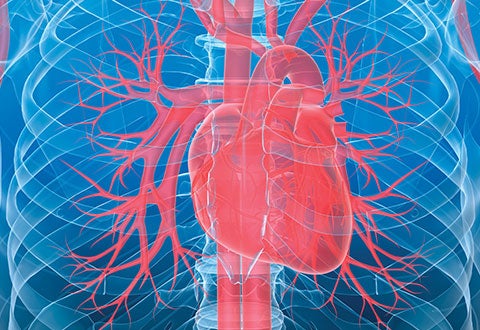
While there may be varied diagnostic and screening tests available for heart disease, it is imperative to assess and consider one’s symptoms and risk factors to determine the types of tests appropriate so as to manage a heart condition effectively.
For the detection of heart disease such as coronary heart disease or the narrowing of the heart’s arteries, a wide array of tests is available, from treadmill electrocardiogram (ECG) test to invasive angiogram. Each test has its own strengths and limitations, and provides different types of information on the heart.
To detect the presence of narrowing heart arteries, certain tests such as the computed tomography angiogram (CTA) would be suitable. Correspondingly, to evaluate the functional effect of narrowing on blood flow in the heart, other tests such as stress echocardiography test or stress nuclear would be useful. No single test can provide both types of information, as such, often times more than one test may be needed.
Various international expert guidelines1, including the latest American College of Cardiology guidelines2, recommend considering patients’ symptoms, risk factors and their probability of developing cardiovascular disease, when deciding on a suitable diagnostic test.
For patients with no symptoms | For patients with a very low likelihood of heart disease (for example, poking or musculoskeletal chest pain) | For patients with chest pain and suspected heart disease |
|---|---|---|
It is recommended to test for risk factors such as high blood pressure, cholesterol, sugar, and manage these risk factors. | Testing has limited value and often can be deferred. | It is recommended to use either stress imaging or a CTA. Both tests have their strengths and weaknesses. |
Routine testing for heart disease with tests such as the CTA is not encouraged for these individuals. | If needed, a treadmill test or coronary calcium scan can be considered. | A CTA has higher sensitivity, while stress imaging is able to assess the effect of blood flow to identify which patients might benefit from intervention. |
As such, choosing a diagnostic test should be based on how it can lead to better outcomes for the patient. In the largest study, the PROMISE Trial compared CTA to stress imaging in 10,000 patients with chest pain, and discovered no difference in clinical outcomes, for death, heart attack or hospitalisation after following up for two years3. Therefore, both test approaches would be reasonable and recommendable.
Keeping heart diseases at bay
While heart attacks, also known as myocardial infarction, may occur unexpectedly due to a sudden obstruction of blood flow in the coronary artery, one might wonder if it is possible to perform a heart scan to rule out the possibility of a blocked artery to prevent a heart attack, even when the individual had no symptoms. Yet, many studies have shown that screening for blockages in individuals without symptoms is not effective at lowering the risk of a heart attack.
Two large randomised controlled trials evaluated the routine use of screening tests such as CTA4 or nuclear stress tests5 for asymptomatic diabetics, showed no benefit in preventing heart attacks or cardiac events. There may be several reasons why such screening approaches do not work, even when targeted at individuals with a higher risk of heart attack.
Heart attacks are usually caused by a sudden obstruction of blood flow in the coronary artery, triggered by a rupture or tear of a cholesterol deposit. It is the unpredictable nature of the rupture, followed by the sudden blood clot that blocks the entire lumen of the artery, which causes the heart attack and not merely the gradual narrowing of arteries.
Additionally, focusing on prevention measures through controlling risk factors, such as ensuring a healthy blood pressure, cholesterol and blood sugar, and no or reduced smoking, would be more effective than relying on occasional cardiac scans. This is because narrowing of arteries can develop over time and cannot be monitored through a scan. The absence of severe narrowing during the point of scanning does not mean that the narrowing will not develop or rapidly worsen later.
In conclusion, a heart scan reflecting healthy results, may give a false sense of security, leading the person to ignore risk factors such as high cholesterol or smoking. On the other hand, an abnormal test may be due to a false positive result, leading to unnecessary anxiety and more tests being done, even when the actual risk is lower than it appears. In individuals without symptoms for heart disease, instead of undergoing screening that yields little to no benefit, it is recommended to focus on prevention measures, through a healthy lifestyle, such as exercising, having a healthy diet, and smoking cessation, and control risk factors, such as treating cholesterol, blood pressure, blood sugar.
1 2019 ESC Guidelines for the diagnosis and management of chronic coronary syndromes. European Heart Journal (2019) 00, 1-71
2 2021 AHA/ACC/ASE/CHEST/SAEM/SCCT/SCMR Guideline for the Evaluation and Diagnosis of Chest Pain J Am Coll Cardiol. 2021 Nov 30;78:2218-2261
3 Douglas PS, Hoffman U, Manesh RP et al. Outcomes of Anatomical versus Functional Testing for Coronary Artery disease. N Engl J Med 2015;372:1291-300
4 Muhlestein JB, Lappe DE, Lima JA et al Effect of Screening for Coronary Artery Disease using CT angiography on mortality and cardiac events in High Risk Patients with Diabetes JAMA
2014;312:2234-2243
5 Young LH, Wackers FJT, Chyun DA et al. Cardiac Outcomes after Screening for Asymptomatic Coronary Artery Disease in Patients with Type 2 Diabetes; The DIAD Study: A Randomized Controlled Trial JAMA 2009;30:1547-1555
This article is from Murmurs Issue 41 (September – December 2021). Click here to read other articles or issues.













 Get it on Google Play
Get it on Google Play